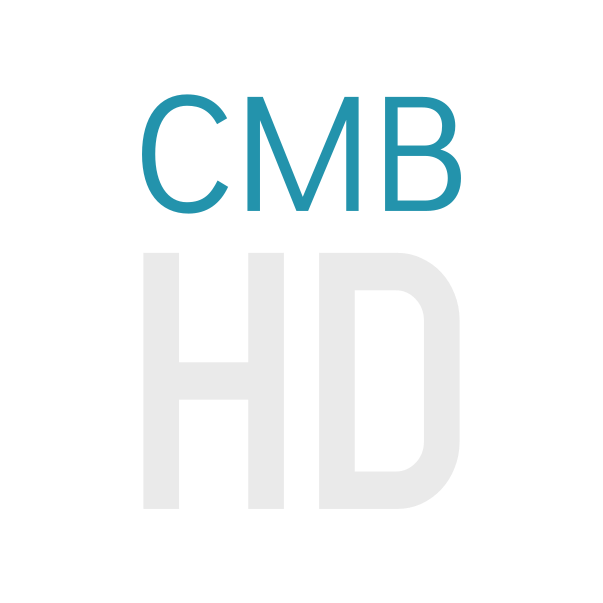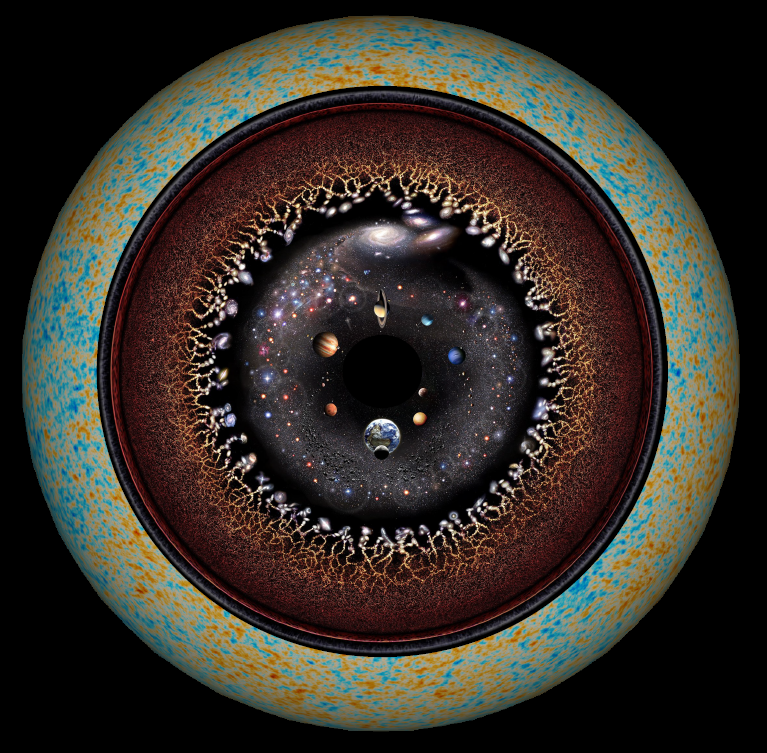Learn More About Our Astronomical Telescopes
CMB-HD Survey and Instrument Overview


Table 2
Shows the expected single-frequency 5σ flux limits CMB-HD will achieve, in units of mJy, between 30 and 280 GHz. These flux limits are based on assuming white noise levels only.
Figure 1:
A possible design for the telescope would be a crossed Dragone design similar to that chosen for SO and CCAT-prime. Although challenging to build, a 30-meter version of this particular design offers a diffraction limited field of view out to r = 0:8 degrees at 150 GHz at the secondary focus, and, with cold reimaging optics such as those shown on the right, diffraction limited beams can be achieved out past a radius of 2.68 degrees at 150 GHz and even further at lower frequencies. These particular designs are limited by the largest silicon optics currently available (45 cm) and could be grouped together in multiple cryostats in order to ensure less downtime and greater flexibility.

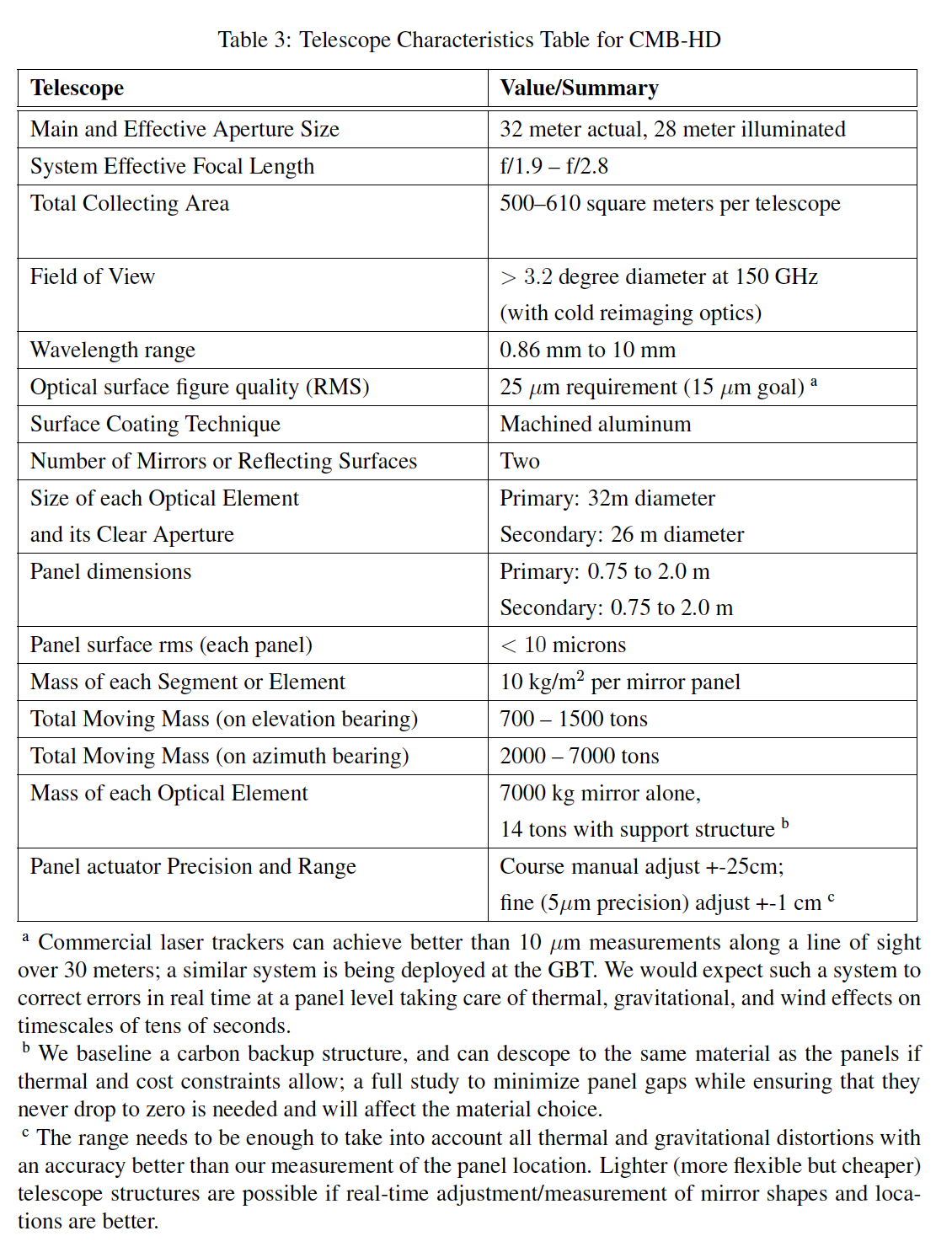
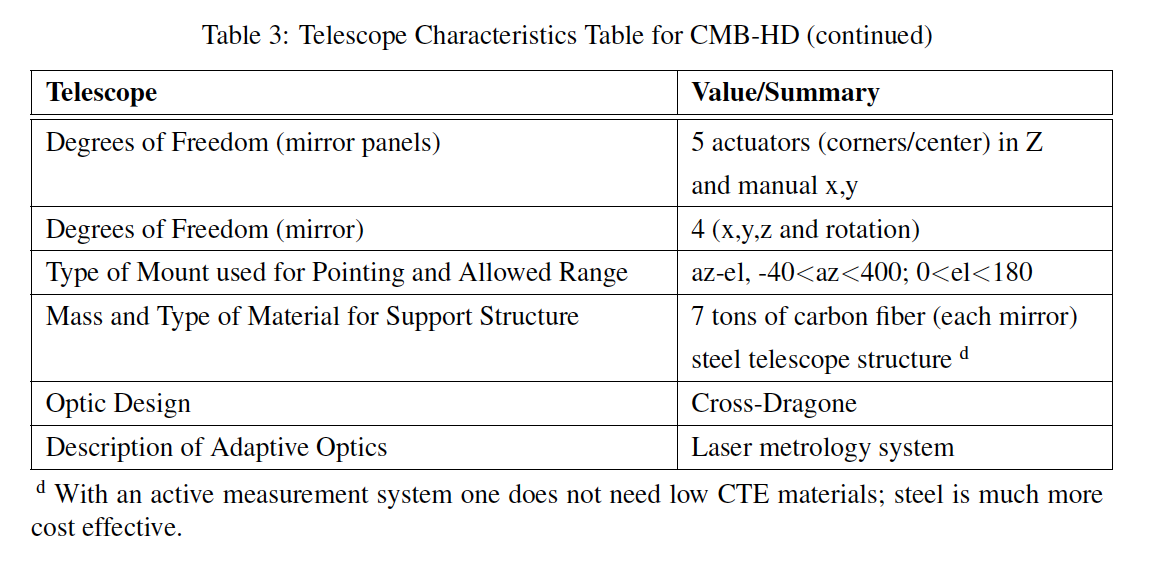
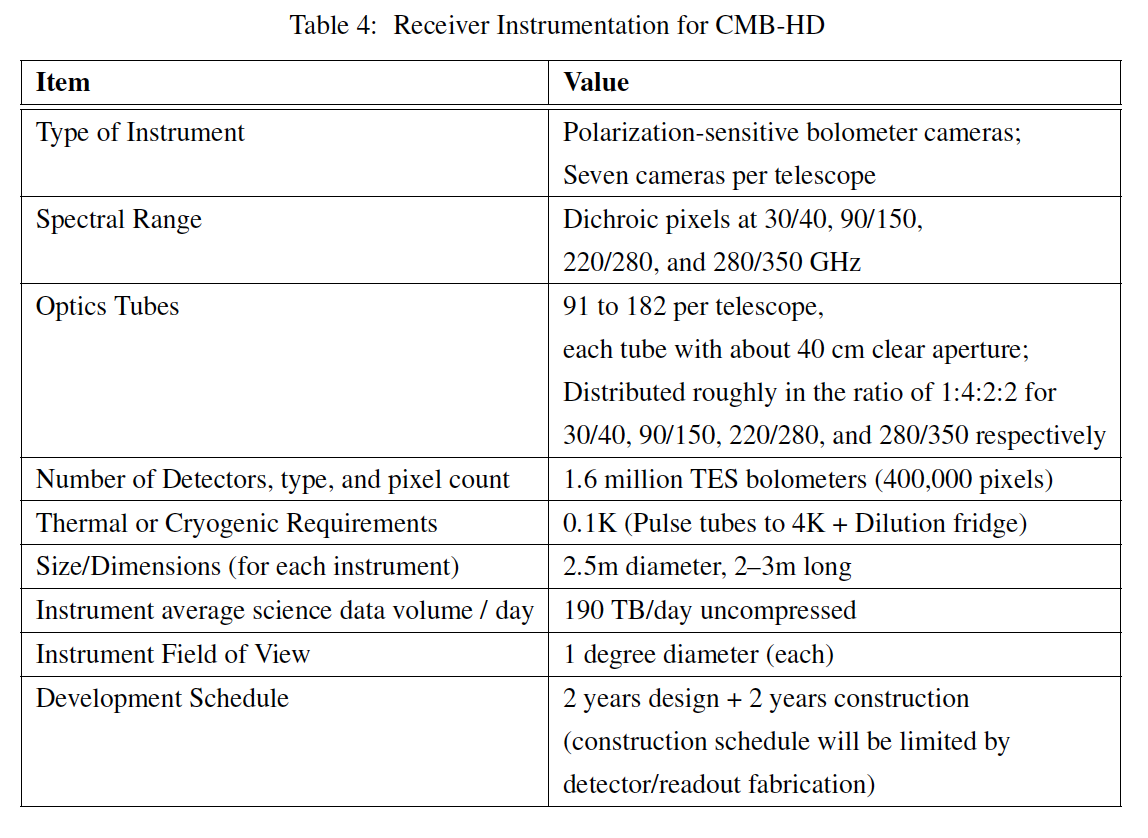
Reference
Sehgal, N et al, CMB-HD:
Astro2020 RFI Response, Feb 2020, https://arxiv.org/abs/2002.12714
